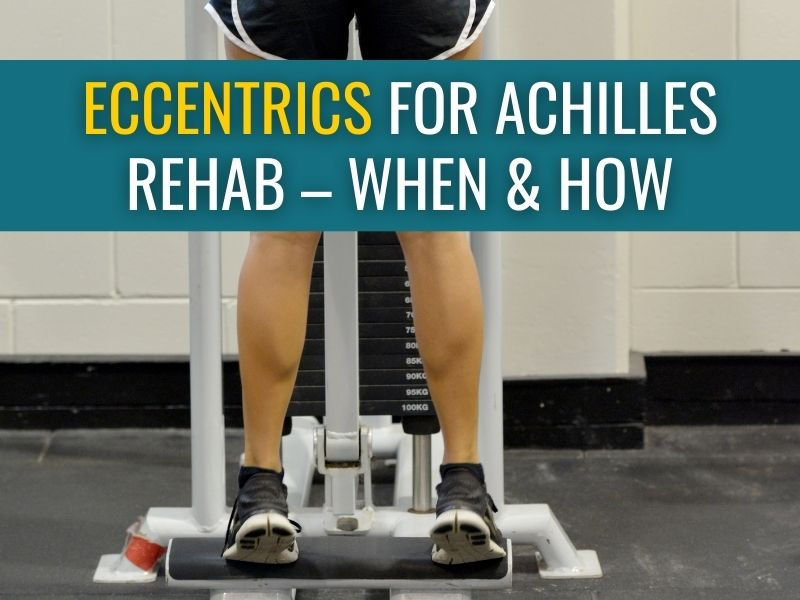Top tips for getting back to running after Achilles tendonitis
- Maryke Louw

- Jun 12, 2019
- 4 min read
Updated: Mar 12, 2025
Not all runners with Achilles tendonitis have to stop all their training, but some may be forced to take a short break. In this article, I’m going to focus on those runners whose Achilles pain have caused them to stop running for a while and how they can know when it’s safe to start running again. Remember, if you need more help with an Achilles injury, you're welcome to consult one of our team via video call.

The terms tendinitis, tendonitis, tendinosis, and tendinopathy mean the same thing for all practical purposes, and we use these interchangeably in most of our articles.
This article contains affiliate links. We might earn a small commission on sales at no extra cost to you.
In this article:
I've also discussed this further in this video:
The research shows that about 27% of runners who develop an Achilles tendinopathy or tendonitis will have a recurrence of their injury when they go back to running. In my experience, this usually happens for two reasons:
1. They haven’t strengthened their tendons properly
When you injure you Achilles tendon, the tendon structure changes and its capacity to cope with the loads from exercise decreases. If you just rest it and don’t strengthen it back up BEFORE you go back to running, it becomes increasingly easier to strain it.
When you run, forces in excess of 3 times your bodyweight go through your tendon. So your strength training programme for your Achilles tendon and calf has to start low (to allow pain to settle) but end with heavy loaded exercises to get it ready for running.
At TreatMyAchilles.com, we find that we can get most of our runners back to training within about 12 weeks. How quickly they then progress to being race-ready will depend on the irritability or their tendons as well as their specific goals. At the point where you go back to running, it's important to not just blindly follow your running programme. Think about it as an extension of your strength training and react and adjust your training according to how your tendon feels.

2. They’ve jumped right back into training and did too much too quickly
As mentioned above, your tendon’s capacity to cope with the forces from running decreases with injury. This means that you have to carefully ease back into running when you start training again, otherwise you can find yourself stuck in a boom-and-bust cycle, where your pain feels better after a period of rest, you start training and it all seems to be going well, so you get back to what you would normally have done before you got injured...and then the pain suddenly returns again, forcing you to stop.
Having to ease back into running can be a bit frustrating, because my patients often find that their cardiovascular systems are fit enough to handle hard running, but that the calf and Achilles tendon will only allow them run-walks at the beginning. But don't you agree that taking it slow is worth another few week's of frustration if it means that you can get back to running without your injury coming back?
The rate at which I get my runners back into running varies dramatically from person to person. For some, we have to start with a run-walk programme, but others may be able to jump straight into a continuous run. There are no hard rules for this, and I tend to evaluate their training programmes (everything they do - not just the Achilles stuff) and symptoms on a regular basis, which allows me to create the most effective programme for them.
It’s also important to allow enough recovery time between sessions. Tendons take longer than muscles to recover after exercise, and it’s best not to run on consecutive days when you’re coming back from injury. Remember to also take the rest of your training programme (including when you do your Achilles strength training) into consideration so that you don’t run on a tired calf and tendon.
Take time to plan and log your training. This will help you gain perspective on how much work you’re asking your Achilles tendon to do and, should your tendon pain flare up, can make it easy to identify what you should do differently next time.
A GPS enabled runnnig watch, such as those made by Garmin, can help you to log your mileage and effort accurately.
For more options, you can visit the Garmin Store on Amazon.
How we can help
Need more help with your Achilles injury? You’re welcome to consult one of the team at TMA online via video call for an assessment of your injury and a tailored treatment plan.
We're all UK Chartered Physiotherapists with Master’s Degrees related to Sports & Exercise Medicine. But at Treat My Achilles we don't just value qualifications; all of us also have a wealth of experience working with athletes across a broad variety of sports, ranging from recreationally active people to professional athletes. You can meet the team here.

About the Author:
Maryke Louw is a chartered physiotherapist and holds an MSc in Sports Injury Management. You can follow her on LinkedIn, Facebook, Twitter, and Instagram.


















